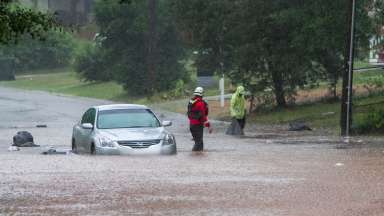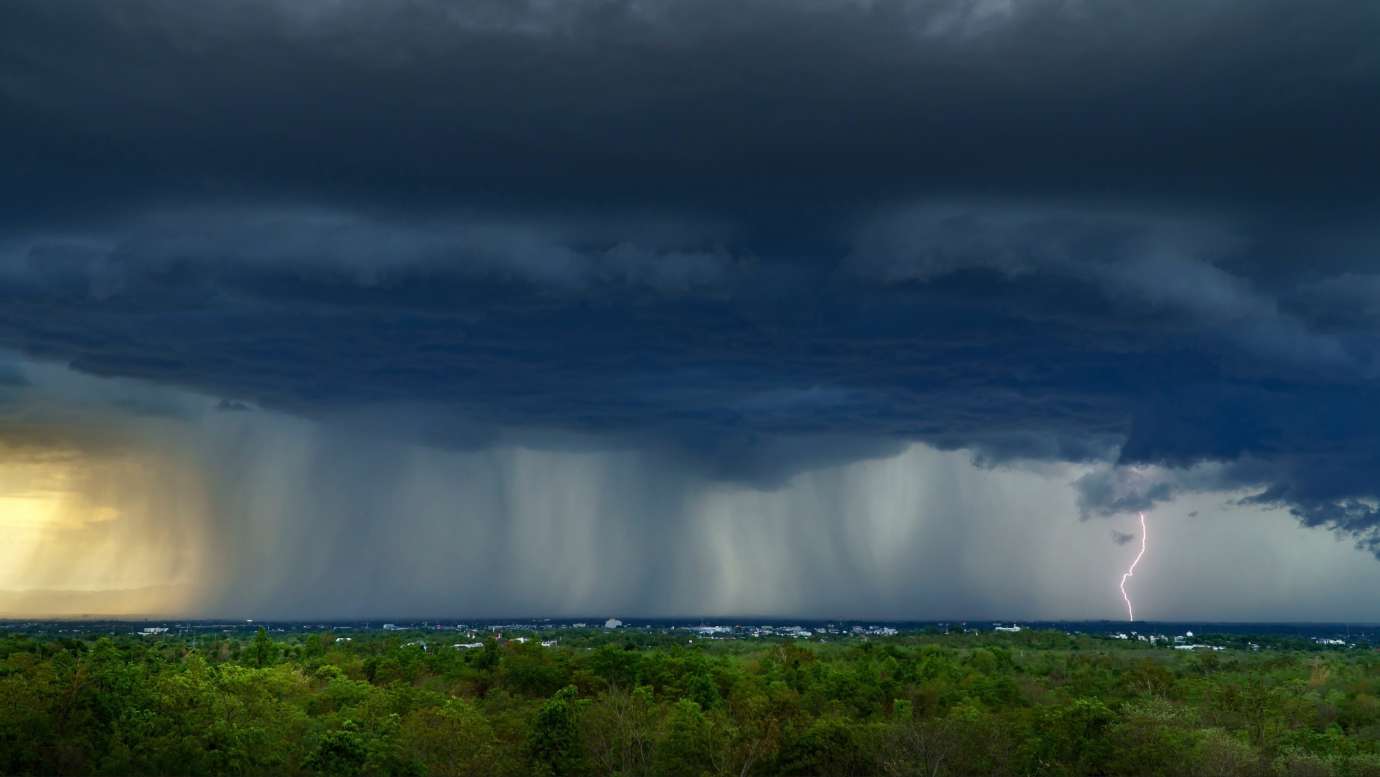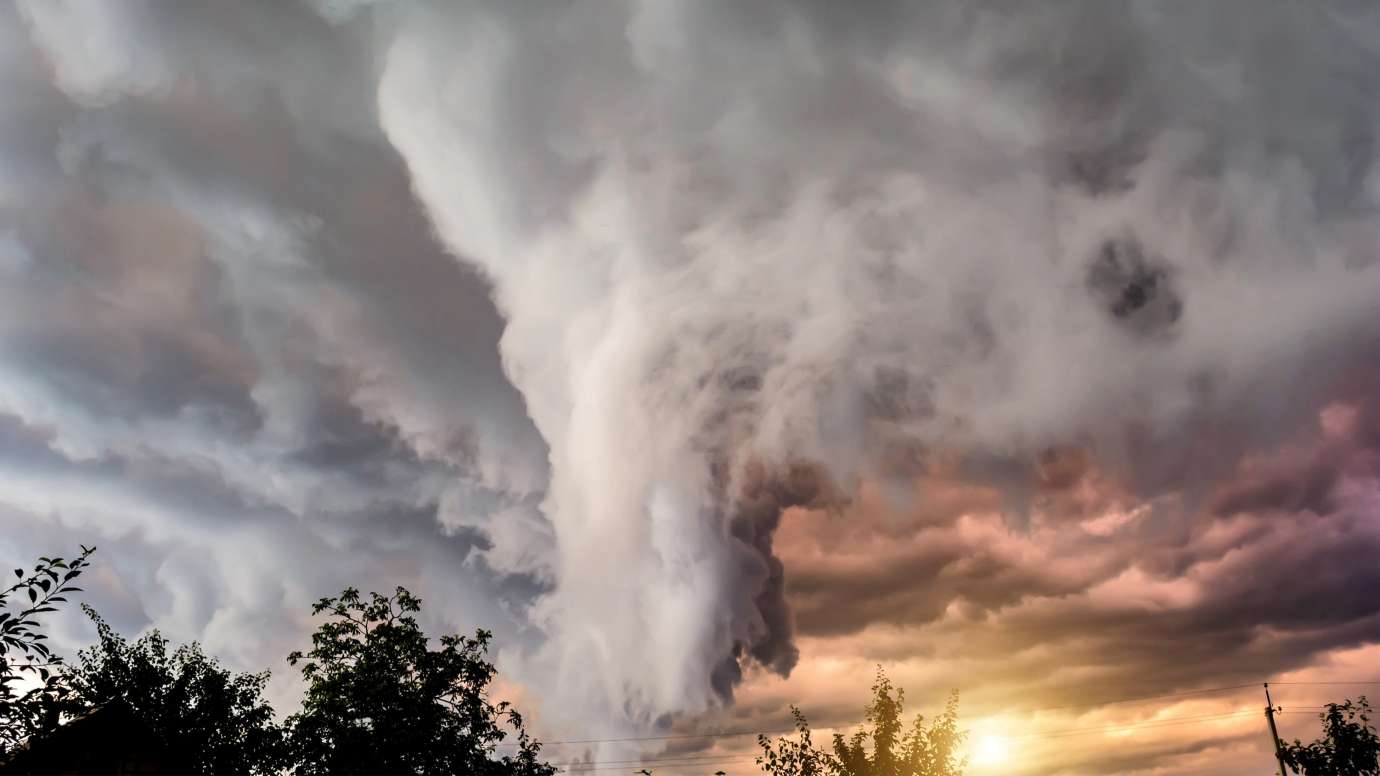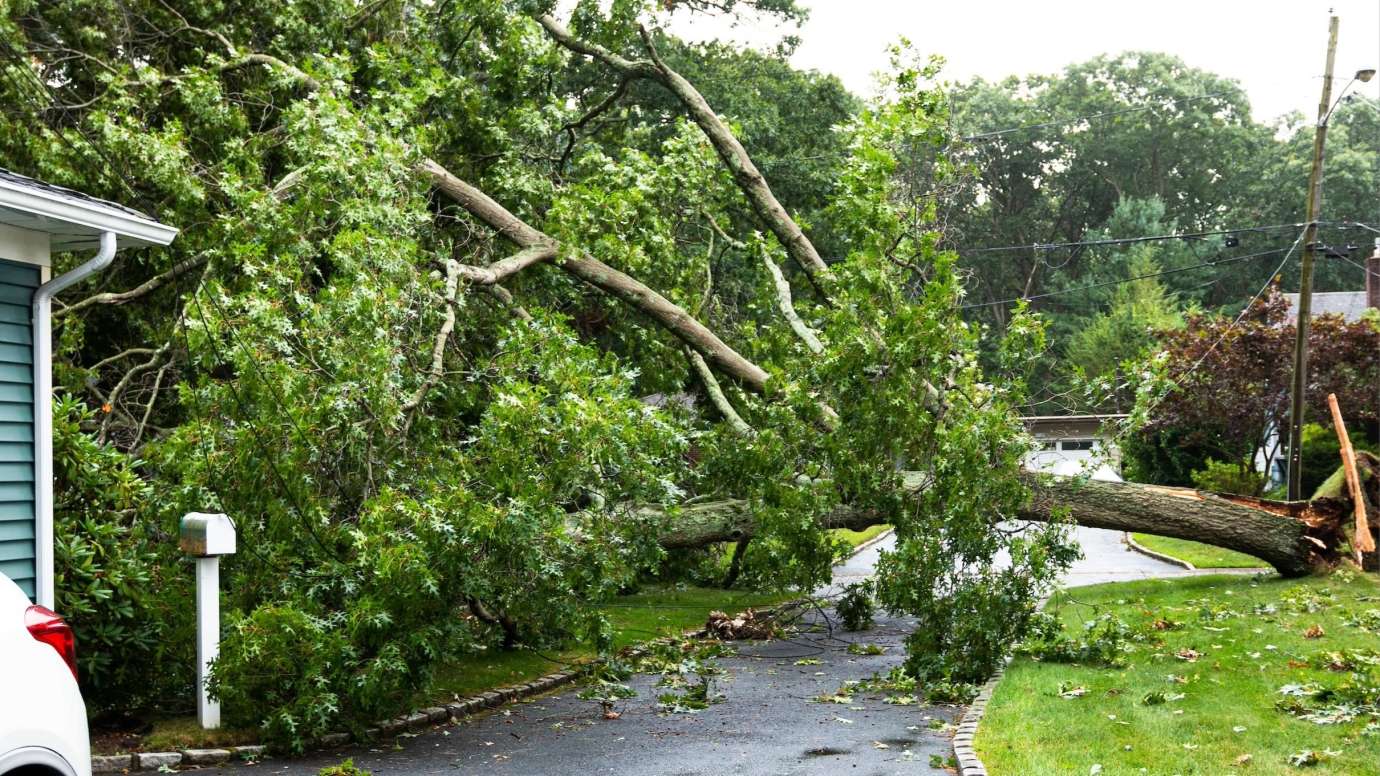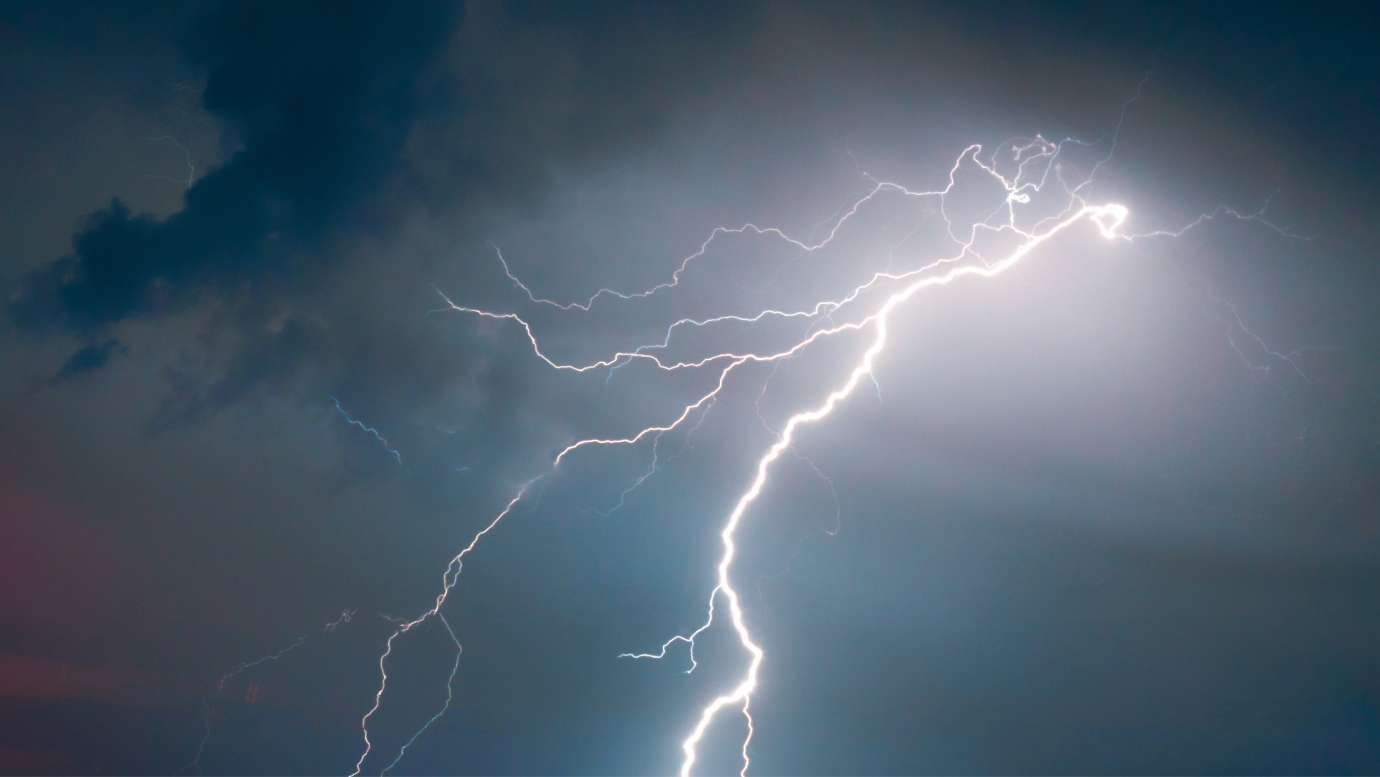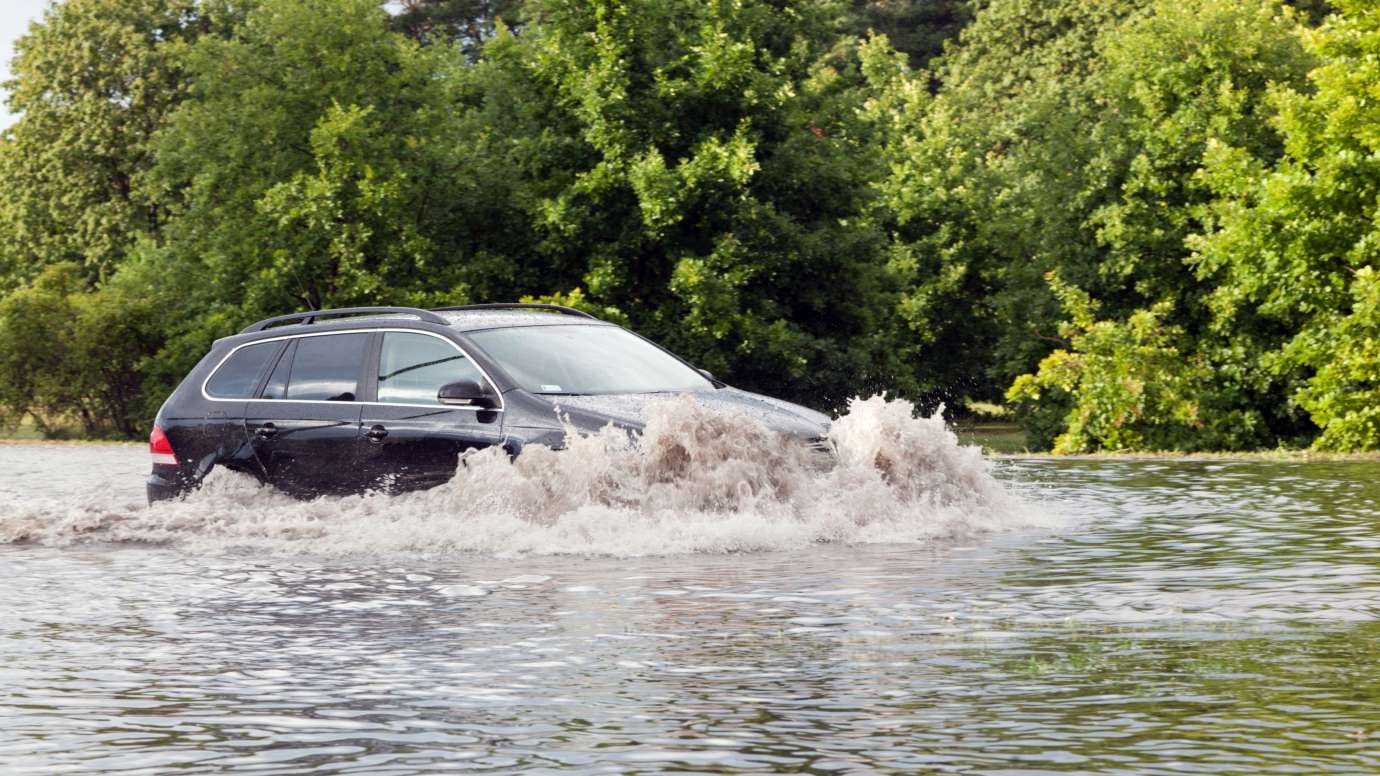Jump To:
Severe Weather can happen at any time of the year, but the most common time of the year is during the spring and fall seasons. Residents and visitors in Raleigh should be prepared for severe weather at all times. Being prepared can help residents take action to protect people and property.
Types of Severe Weather
Click through the images to learn more about the different types of severe weather. This information is provided by the National Weather Service.
Thunderstorms
A thunderstorm is a local storm that produces lightning and thunder. Thunderstorms are often accompanied by showery rain and gusty winds, and may also bring hail or snow. Thunderstorms occur most frequently during the spring and summer, but they are also possible in the fall and winter. North Carolina experiences about 40 to 50 thunderstorm days per year. About 10 percent of thunderstorms are classified as severe – one that produces hail at least an inch in diameter, has winds of 58 miles per hour or stronger, or produces a tornado.
Tornadoes
Tornadoes are nature’s most violent storms. Spawned from powerful thunderstorms, tornadoes can cause fatalities and devastate a neighborhood in seconds. A tornado appears as a rotating, funnel-shaped cloud that extends from a thunderstorm to the ground with whirling winds that can reach 300 miles per hour. Damage paths can be in excess of one mile wide and 50 miles long. Some tornadoes are clearly visible, while rain or nearby low-hanging clouds obscure others. Sometimes, tornadoes develop so rapidly that little, if any, advance warning is possible.
Wind
Straight-line winds can topple trees onto cars, houses, and power lines. Many deaths from straight-line winds are the result of trees falling onto the person, whether they are outside, in their house, or driving in their car. Strong straight-line wind events can even destroy buildings, especially mobile homes and manufactured homes.
Hail
Hail is a form of precipitation consisting of solid ice that forms inside thunderstorm updrafts. Hail can damage aircrafts, homes, and cars, and can be deadly to livestock and people. Hail can exceed the size of softballs and fall at speeds of over 100 mph, seriously injuring or killing anyone in its path.
Lightning
All thunderstorms produce lightning and are dangerous. Lightning often strikes outside the area of heavy rain and may strike as far as 10 miles from any rainfall. The most effective lightning safety action can be found in avoiding the lightning threat altogether. If thunderstorms are in the forecast, consider postponing activities to avoid being caught in a dangerous situation.
Flooding
Flash flooding in North Carolina usually occurs when a large amount of rain falls in an area over a short period of time. The ground can only soak up so much water in a given time, and when the rain rate exceeds what can infiltrate into the ground or run off into drainage systems or streams, flooding is likely to occur. Hurricanes, tropical storms, and ordinary thunderstorms can produce flash flooding.
Severe Weather Alerts
Wireless Emergency Alerts (WEA) are alerts that do not require sign-up or an app and are sent to smartphones based on the location of the emergency. Examples are AMBER alerts, imminent threats, and other public safety alerts.
Other ways to receive weather alerts include:
- Ready Wake Weather Alerts
- NOAA Weather Radio
- Weather Apps
- Social Media, local media, and from friends and family
Preparing for Severe Weather
Creating a Severe Weather Safety Plan with friends and family is crucial to know where to go and what to do during emergencies.
Tornado Safety
When a Tornado Warning is issued, residents should seek safe shelter immediately. The vast majority of injuries and deaths occur from flying debris. Move to the lowest floor of your home or business, and into an interior room, closest, bathroom, or hallway without winds. Use pillows, mattresses, and even bicycle or motorcycle helmets to protect yourself from flying debris. If in a mobile home or car, take shelter in the nearest business or a ditch if that’s possible.
Flood Safety
Pay attention to road closures during flash flooding. Barriers and detours are put in place for safety. Most importantly, emergencies should be reported to 911. Stay updated on flooded streets and roads in Raleigh by Tracking Storms with Us and following Raleigh Water on Twitter and Facebook for urgent storm alerts.
Tracking Flooding in Raleigh
Get an inside look at how our flood monitoring system works – We use gauges to track stream levels, cameras to monitor road flooding, and signs to notify resident when water reaches the road.
Severe Weather Preparedness Week
Severe Weather Preparedness Week highlights a specific severe weather topic each day. Visit the links below to learn more details about each topic and how to prepare for them.
| Date | Topic |
|---|---|
| Day 1 | Overview |
| Day 2 | Severe Thunderstorms & Tornadoes |
| Day 3 | Severe Alerts |
| Day 4 | Wind & Hail & Tornadoes |
| Day 5 | Lightning |
| Day 6 | Flooding |
| Day 7 | Make A Plan |
